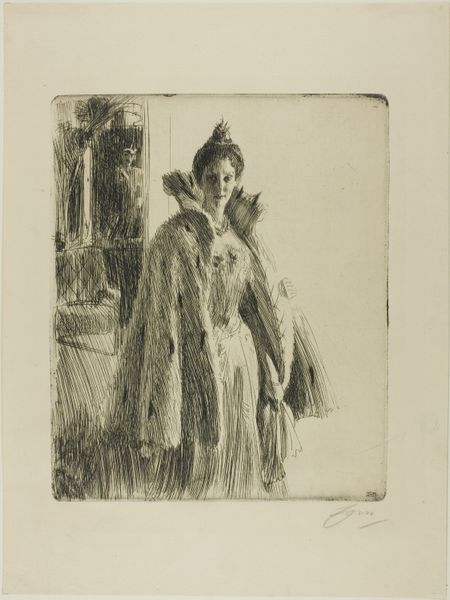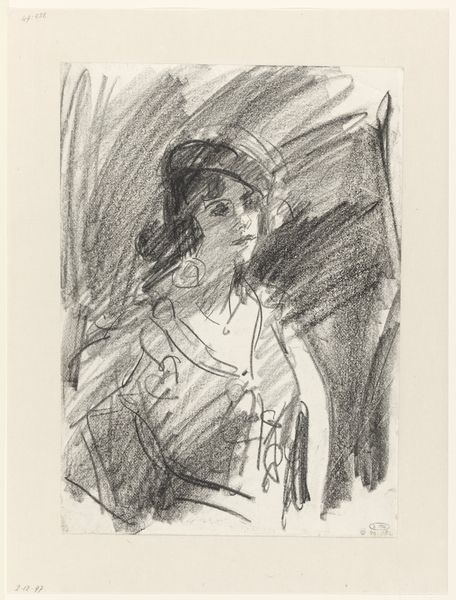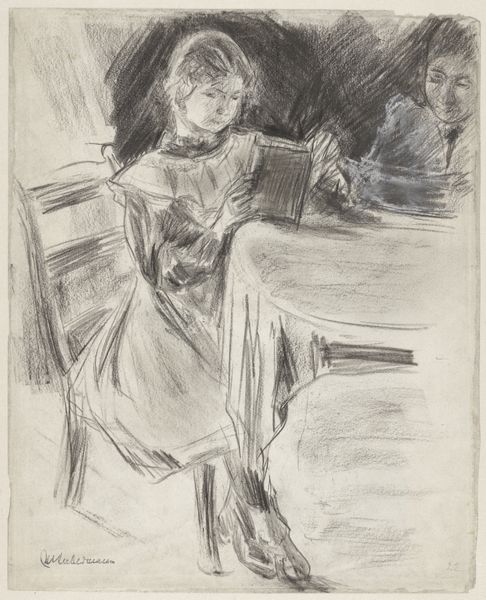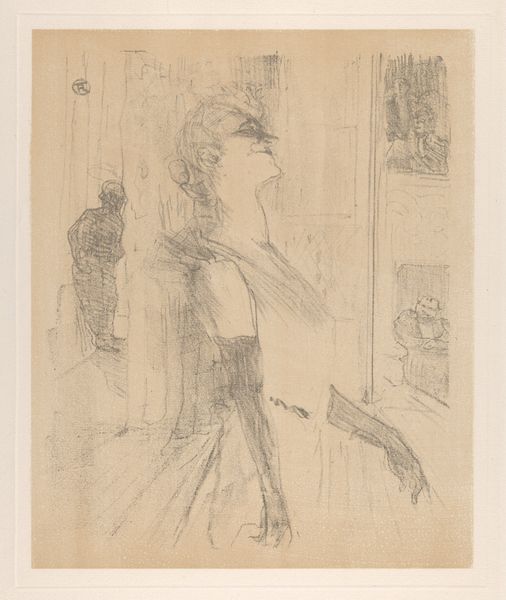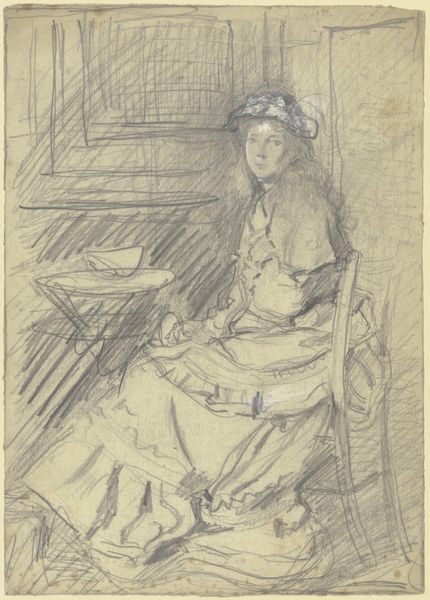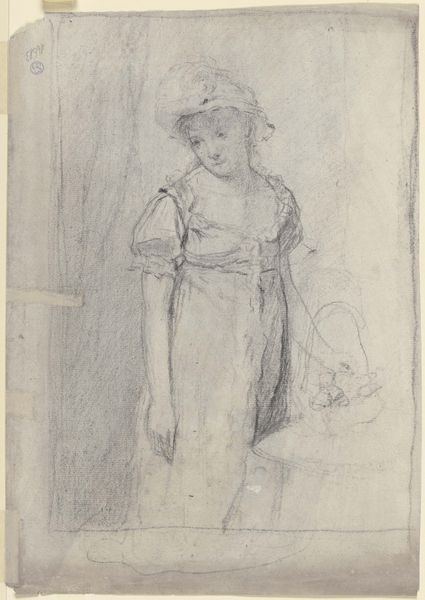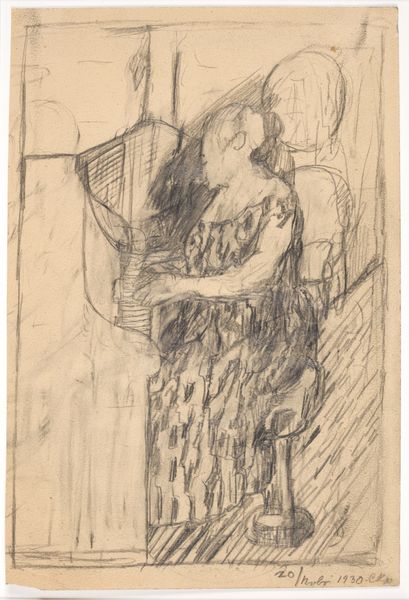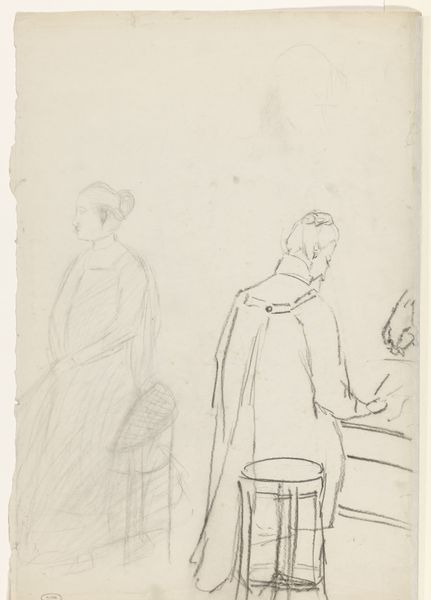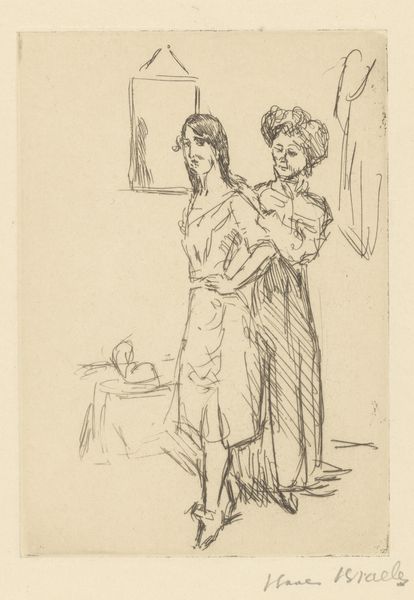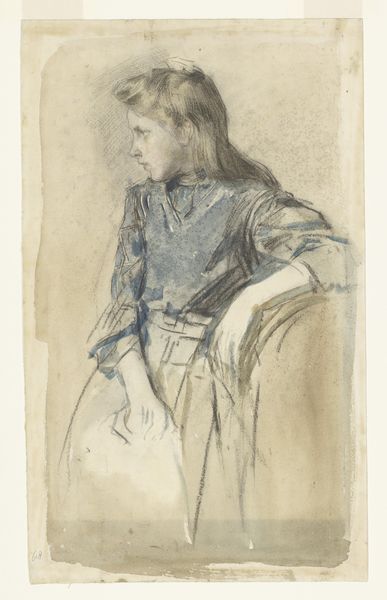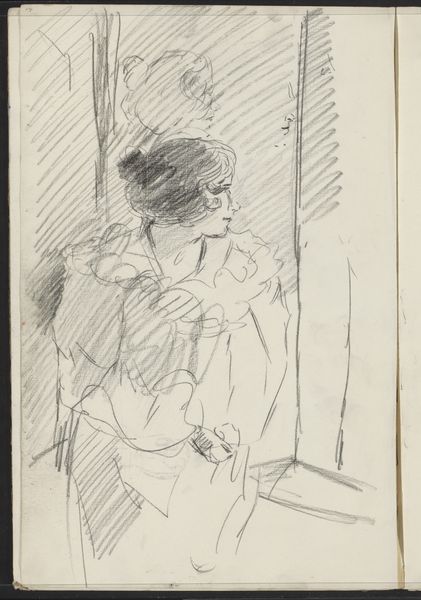
Dimensions: height 433 mm, width 275 mm
Copyright: Rijks Museum: Open Domain
Curator: Standing before us is Isaac Israels’s work, “Young Woman at the Milliner’s," created around 1908. It is a drawing composed of charcoal and pastel and is now part of the Rijksmuseum collection. Editor: The overall effect is delicate. It gives a quick glimpse of that specific moment, an exercise with the charcoal of a very ordinary scene, rendered as fleeting as a visit itself. Curator: That sense of immediacy is precisely what Israels sought. His involvement in depicting the world of fashion aligns him with broader trends of the Impressionist era, one deeply affected by societal issues. Consider how such art granted visibility, albeit through a male gaze, to the spaces women occupied. Editor: Right. I notice how Israels captured the textures. The way he uses the charcoal and pastel to depict the soft fabric of the woman's dress, almost melting into the surrounding atmosphere of the store. How deliberate are the marks across the surface; you see Israels is fascinated with the actual materiality of clothesmaking and display itself. Curator: Indeed, Israels often depicted working-class women and fashionably attired women, reflecting his keen awareness of class and gender distinctions of that time, issues made all the more resonant as the suffragette movement gained momentum. Editor: But I wonder about the dynamic, this patron observing or, perhaps, being worked upon. This moment caught, it speaks of so many hands creating objects – labour captured in an instant in what becomes this intimate picture, and which turns her – the main subject, the young lady being fitted – into the artwork. Curator: Through pieces like this one, Israels prompts us to reflect on these layered social realities embedded in the fabric of daily life, on visibility, and on who controls its representation. Editor: This drawing helps us reconsider the value that we assign to an item of dress or even a memory of time in the workshop by making this visible. Curator: It certainly opens pathways to better appreciate those dynamics and its cultural meaning through a focused study of a ‘simple’ moment. Editor: Very simply put. I can understand more readily what such "minor" impressionistic works give to us.
Comments
No comments
Be the first to comment and join the conversation on the ultimate creative platform.

